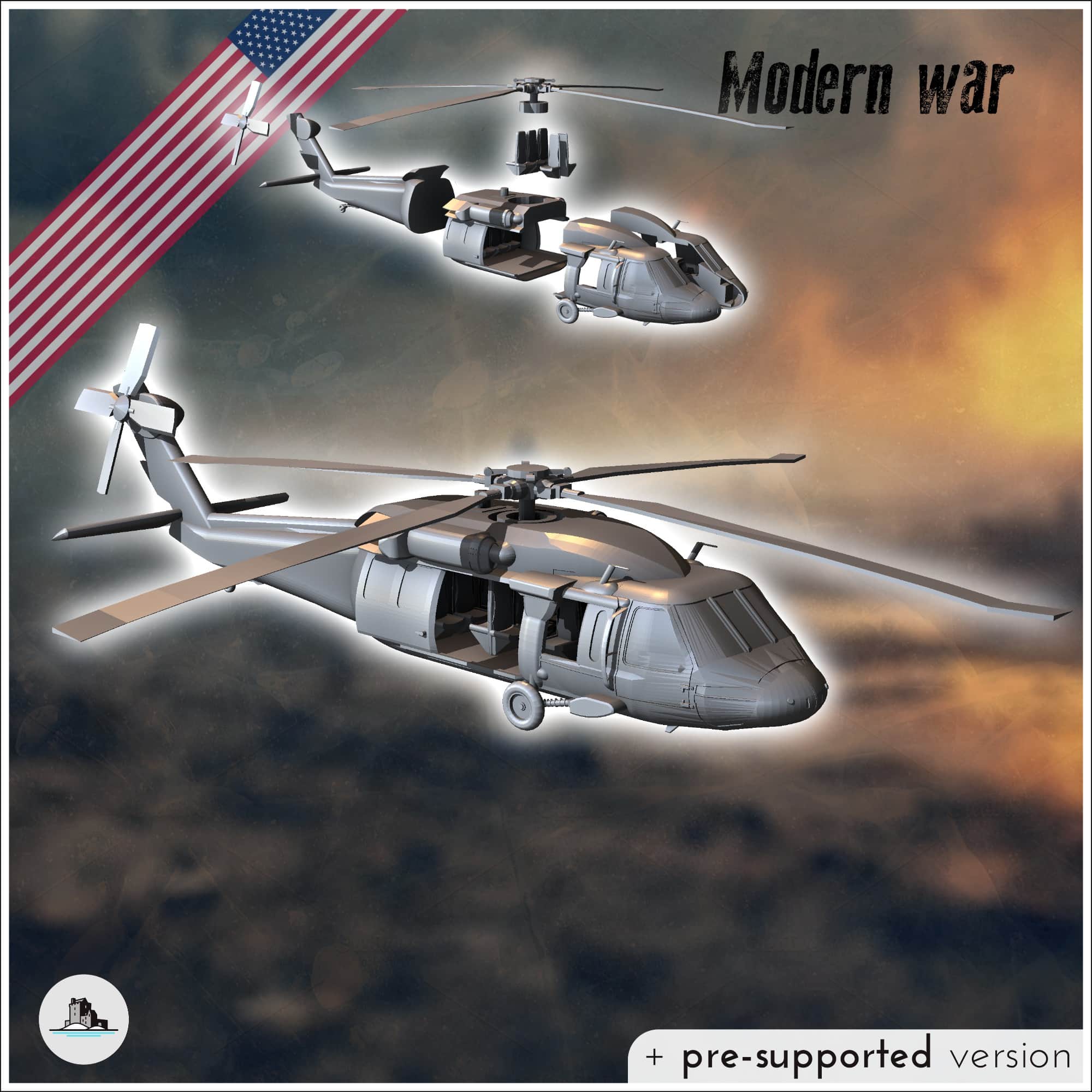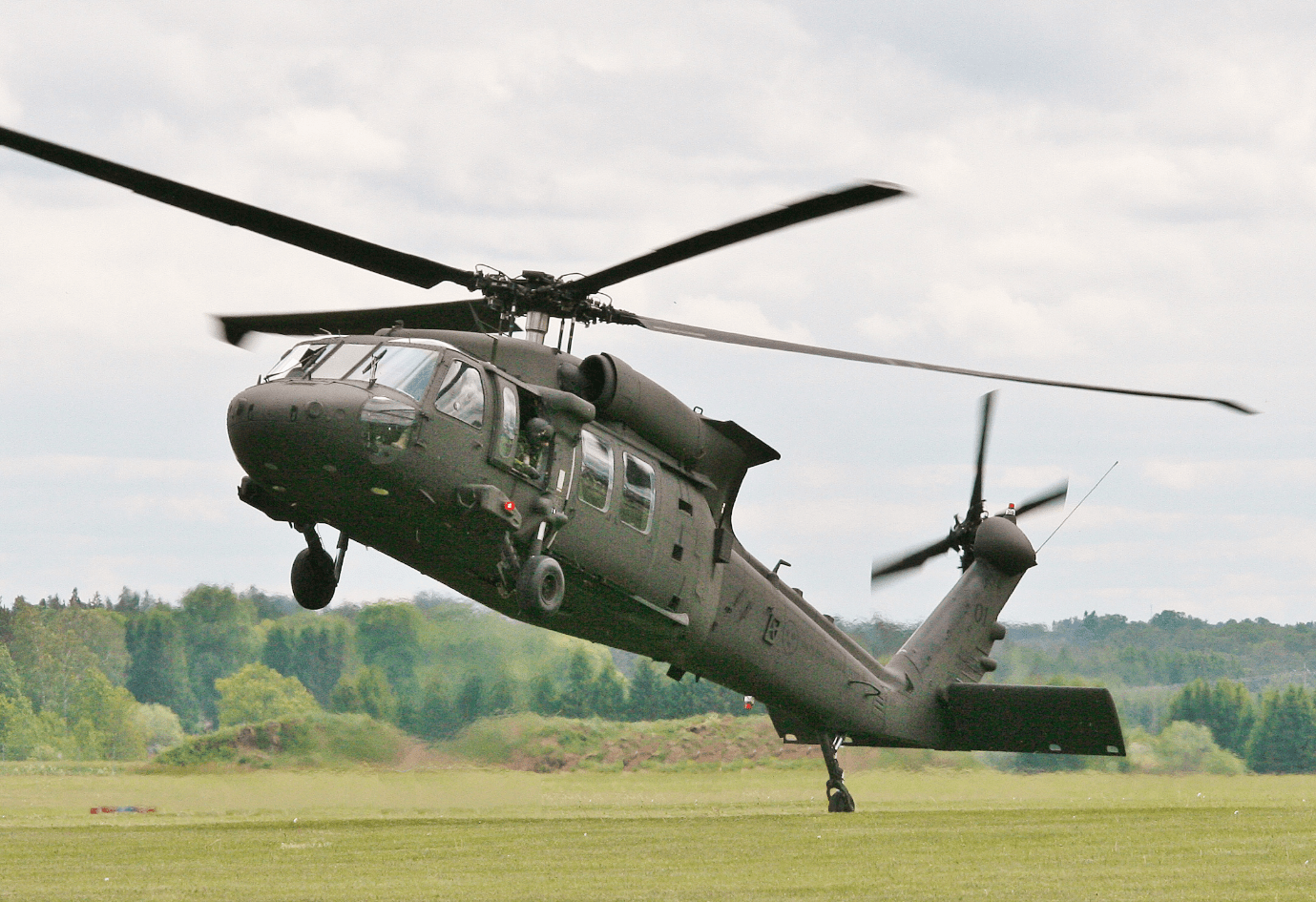Whatever You Required to Know Concerning the UH 60 Helicopter
The UH-60 helicopter, a keystone of U.S. Military air travel considering that its launching in 1979, stands for an impressive blend of engineering and operational adaptability. As army requirements evolve, so as well does the helicopter, with ongoing advancements aimed at improving its capacities and incorporating modern technologies.
History of the UH-60
Established in the late 1970s, the UH-60 Black Hawk helicopter arised as a feedback to the U.S. Army's requirement for a functional energy helicopter that can perform a range of objectives under difficult problems. The inspiration for its layout was the drawbacks determined in the earlier helicopters used throughout the Vietnam Battle, specifically in regards to rate, ability to move, and survivability.
The Black Hawk was created by Sikorsky Airplane, including innovative technologies and materials to enhance its efficiency and longevity. It was formally introduced into solution in 1979, rapidly becoming an essential asset for armed forces operations - uh 60. Its capacity to carry soldiers, medical emptying, and logistical assistance in both combat and altruistic missions made the Black Hawk an invaluable component of the united state Army's air travel fleet
Throughout the years, the UH-60 has been continuously updated, adjusting to the changing nature of war and the advancing demands of modern army procedures. Its operational background consists of participation in significant problems, peacekeeping missions, and calamity relief initiatives, solidifying its track record as a trustworthy and efficient helicopter in various environments worldwide.

Design and Specs
The design of the UH-60 Black Hawk helicopter continually shows a dedication to operational efficiency and flexibility. Created by Sikorsky Aircraft, this medium-lift energy helicopter includes a smooth, wind resistant fuselage that improves speed and ability to move. Its tandem blades system, defined by 2 counter-rotating blades, reduces resonance and increases lift capacity, permitting for more secure operations in diverse atmospheres.
The UH-60 is powered by 2 T700-GE-701C turboshaft engines, offering an optimum speed of about 180 knots and a range of around 400 nautical miles. Its durable airframe is created from innovative composite materials, guaranteeing longevity while maintaining a relatively low weight. The helicopter has a maximum gross weight of regarding 22,000 extra pounds, sustaining a functional haul arrangement.

Objectives and duties
A versatile system, the UH-60 Black Hawk helicopter offers a wide range of duties and missions within armed forces operations. Made primarily for army transport, it can carrying up to 11 soldiers, making it an essential possession for quick deployment and logistical support.
In enhancement to army transport, the UH-60 click for more stands out in clinical emptying (MEDEVAC) goals, equipped with sophisticated medical tools to give vital treatment throughout transportation. Its capacity to operate in diverse atmospheres improves its performance in fight search and rescue (CSAR) operations, where swift extraction of employees is essential.
The helicopter additionally plays a considerable duty in reconnaissance and security goals, making use of onboard sensors and devices to debrief. Furthermore, its adaptability includes logistical assistance, click here to read with the ability of carrying materials and devices to ahead operating bases - uh 60.
In combat procedures, the UH-60 can be furnished with different weapon systems, enabling it to provide close air assistance. Its multi-role capacity makes the Black Hawk an important tool for modern-day military pressures, adapting perfectly to the progressing demands of combat zone scenarios and guaranteeing objective success throughout an array of operational contexts.
Performance and Capacities
Understood for its robust efficiency, the UH-60 Black Hawk helicopter boasts outstanding capabilities that boost its functional performance throughout various missions. uh 60. This multi-role airplane is geared up with effective twin-engine Turbomeca Arriel 1D1 engines, giving phenomenal rate and ability to move, with a maximum cruise ship rate of around 150 knots and an operational variety of around 400 nautical miles
The Black Hawk's sophisticated avionics and fly-by-wire control systems considerably boost flight safety and security and handling, allowing it to run in diverse atmospheres, consisting of unfavorable weather. Its convenience is further exhibited by its ability to lug as much as 11 totally geared up soldiers or a haul of roughly 8,000 extra pounds, making it ideal for army transportation, clinical evacuation, and logistical assistance goals.
Additionally, the UH-60 is developed for survivability, including strengthened airframes, ballistic security for team and guests, and advanced countermeasure systems to evade hazards. The helicopter's agility and speed, incorporated with its capability for fast deployment, make it an indispensable asset in modern-day army operations, making certain that it stays a crucial element of tactical air assistance straight from the source and combat zone flexibility.
Future Developments

One substantial emphasis is the integration of sophisticated avionics systems, which will certainly enhance situational understanding via improved navigation and interaction capabilities. This consists of the potential use synthetic intelligence to assist pilots in decision-making and goal preparation.
Furthermore, future variations might incorporate innovative products and style functions to reinforce the helicopter's sturdiness and decrease its radar signature, boosting survivability in opposed settings.
The introduction of hybrid-electric propulsion systems is also imminent, aiming to improve fuel effectiveness and decrease logistical problems. Such developments might prolong operational variety and reduce the helicopter's ecological footprint.

Verdict
The UH-60 helicopter represents a considerable development in armed forces aeronautics considering that its intro in 1979. The UH-60's sustaining presence highlights its important function in contemporary military procedures and highlights the continuous advancement of military aeronautics modern technology.
The UH-60 helicopter, a cornerstone of U.S. Army aviation given that its launching in 1979, stands for an impressive blend of design and operational flexibility. As military demands progress, so also does the helicopter, with recurring improvements intended at boosting its capabilities and incorporating contemporary technologies.The design of the UH-60 Black Hawk helicopter regularly shows a commitment to functional effectiveness and convenience. Established by Sikorsky Aircraft, this medium-lift energy helicopter features a smooth, aerodynamic body that boosts rate and ability to move.The UH-60 helicopter stands for a significant innovation in military aviation since its introduction in 1979.
Comments on “The UH 60 Black Hawk: Versatility and Performance in Military Aviation”